Have you ever heard of Cividale del Friuli, a town of eleven thousand inhabitants on Natisone? Probably not. But for example, Carlos Santana and Sting – yes. Both of them have already sung here in this magical environment.
Table of Contents
Friuli – Venezia Giulia is one of the twenty regions of Italy. It is located in a special place where the borders of three countries meet and where the influences of three cultures intertwine: Italian, Slovenian, and Austrian. The Italian state emphasized the uniqueness of Friuli by granting it the status of one of the five autonomous regions that enjoy independence in various areas, including fiscal.
However, vacationers usually avoid this region and focus on the neighboring Veneto region, with the famous Venice in the foreground. Unfortunately, the Friuli region is considered its inferior sibling, although it is just as beautiful and enjoyable. The only thing he lacks is promotion. There are cities and towns here, architectural jewels with historical significance that are practically completely undiscovered. One of them is certainly the city of Cividale del Friuli, whose monuments were included in the UNESCO list 2011.
Soak up the atmosphere of Cividale del Friuli >>
More than 2000 years of history
The history of Cividale del Friuli dates back to Roman times. The city is believed to have been founded in 50 BC by Gaius Julius Caesar. The Roman emperor appreciated the hard-to-reach location at the foot of the Eastern Alps and consecrated the creation of the city, which he named Forum Iulii. The main function of Cividale del Friuli at its foundation was military.
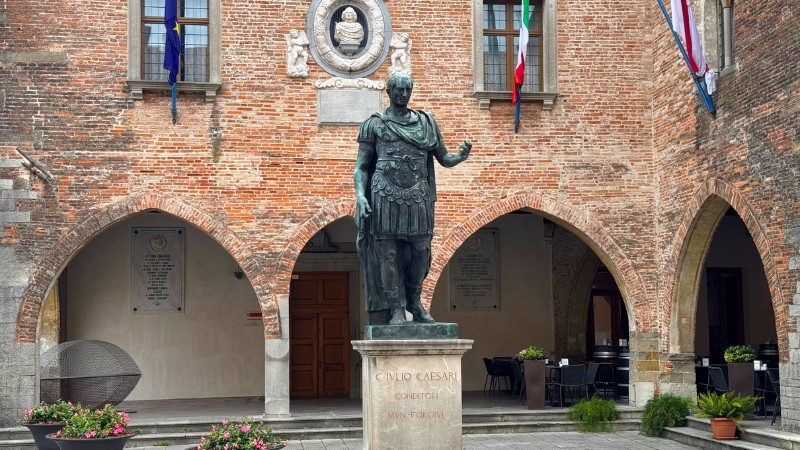
Today, a monument to Julius Caesar stands in front of the city hall.
Devil’s Bridge
The symbol of Cividale is the Devil’s Bridge (Ponte del Diavolo) – a single-column structure from the 15th century AD of two fields built on a rock washed by a river. And why the devil’s bridge? Legend has it that the ruler himself built it in a single night. As a reward for building the bridge, he demanded the soul of whoever crossed it first. In the morning, when the bridge was built, people stood around, but no one was willing to cross the bridge. Suddenly, a stray cat appeared from the crowd (sometimes a dog is mentioned) and ran across the bridge. Thus, the devil was left without a human soul, and the bridge could be consecrated.
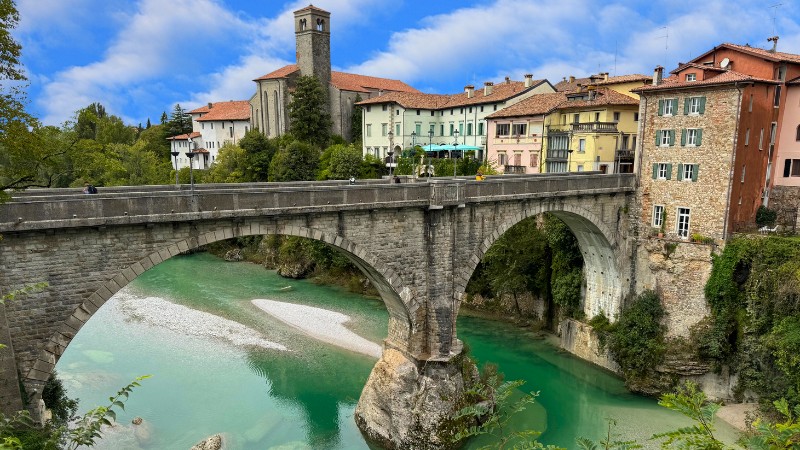
The Devil’s Bridge is truly a masterpiece of architectural skill. You can admire it and the wonderful panorama of Cividale del Friuli from the adjacent upper terraces. Or, if you’re more fit, walk down the stairs to the very cool stream of the Natisone River, where the view of the bridge is even more stunning.
Celtic hypogeum
Near the Monastero Maggiore, you will find the Celtic Hypogeum (Ipogeo Celtico). The word hypogeum refers to an underground ceremonial space (temple) or tomb. That in Cividale del Friuli dates from the 4th-3rd century—BC, i.e., from the period before the foundation of the city. The hypogeum here consists of various underground rooms excavated in the rock by an ancient technique in different levels and branches. There are alcoves and crude benches on the walls, but the biggest mystery is the three large masks carved into the wall.
And what was the original function of the Celtic Hypogeum in Cividale del Friuli? No one knows for sure. However, there are several theories about the function of the site. Some believe that it had a funerary use in the days when the Celts resided in Cividale. Others suggest that Ipogeo Celtico was a prison from the Roman period.
Soak up the atmosphere of Cividale del Friuli >>
Monastery complex of Santa Maria in Valle
The monastery of Santa Maria in Valle (Monastero Maggiore) was probably founded as early as the 8th century and originally served as a female Benedictine monastery. However, its importance grew rapidly thanks to the Lombards, a Germanic tribe that dominated northern Italy at the time. The monastery has undergone many modifications over the centuries, but what makes it special today is its Lombard Chapel, also known as the Tempietto Longobardo. This chapel is one of the best-preserved and most important monuments from the period of Lombard rule.
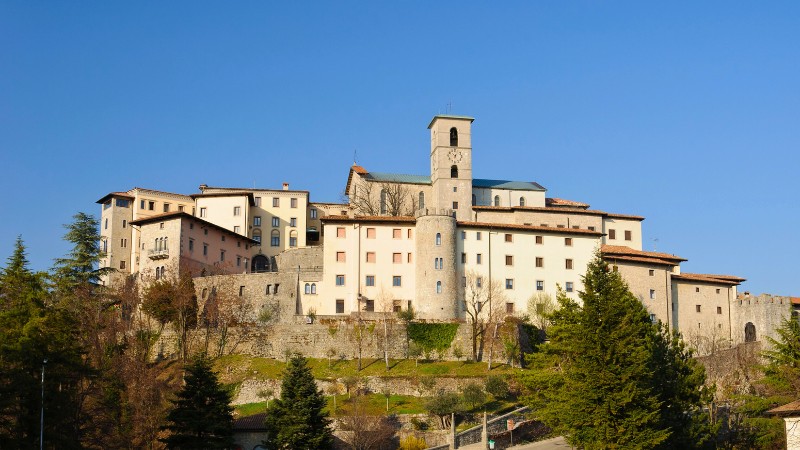
Although the chapel’s space is relatively small, its artistic richness is astounding. The walls are decorated with beautiful reliefs and sculptures depicting saints and angels. The decoration combines the influences of different cultures – from Byzantine art to Germanic motifs, which makes it a unique work of its time. The chapel is also interesting for its architecture. It combines elements of the early medieval and Romanesque styles that were typical for the period. The Tempietto Longobardo is often referred to as one of Italy’s most important surviving works of Lombard art.
In addition to the Langobard Chapel, the monastery complex itself is also worth attention. Although it looks austere from the outside, inside, it boasts a rich interior, including old frescoes and religious artifacts that speak of the spiritual and cultural past of this place. History breathes upon you as you walk through the corridors of the monastery – a calm, quiet atmosphere that recalls the ancient times when this place served as a retreat for nuns.
So it’s really no wonder that in 2011, the monastery of Santa Maria in Valle was listed as a UNESCO World Heritage Site as part of a wider project called The Lombards in Italy: Places of Power (AD 568-774). This project includes several other sites throughout Italy that are associated with the Lombard heritage, and the monastery in Cividale del Friuli is one of the most valuable monuments of this era.
National Archaeological Museum
For history lovers, the National Archaeological Museum (Museo Archeologico Nazionale), located in the city center, is an inevitable stop. The museum contains a rich collection of artifacts from the Roman and Lombard eras, including weapons, ceramics, jewelry, and other objects that illustrate life in the area over the centuries. One of the most valuable exhibits is the collection of finds from the Lombard tombs, which reveal much about the customs and rituals of this once-powerful tribe.
In conclusion
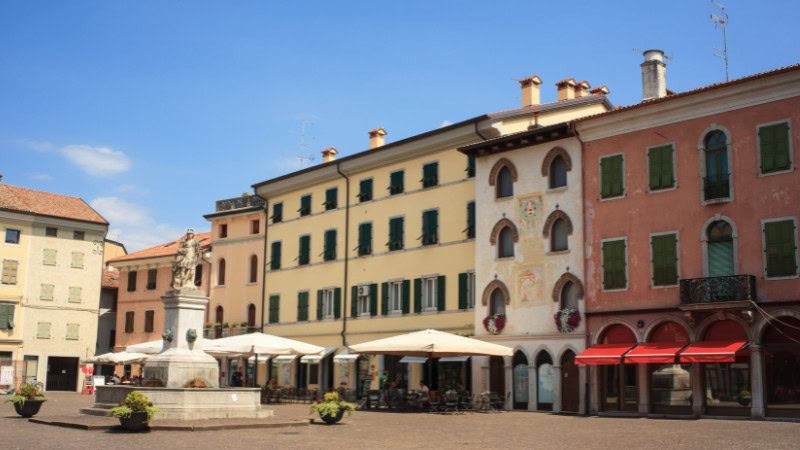
Cividale del Friuli is one of those picturesque Italian towns that will win you over with its authenticity and historical depth. From the monastery of Santa Maria in Valle and its Lombard chapel, which takes you back to the early Middle Ages, through the Devil’s Bridge and the mysterious Celtic hypogeum, to the narrow streets full of cafes and restaurants, the city offers a harmony between the past and the present. For any traveler looking for less touristy places with a rich history, Cividale del Friuli is a great choice. Let yourself be carried away by its charm, immerse yourself in its history, and enjoy the peaceful atmosphere of this jewel of the Italian region of Friuli-Venezia Giulia.
Soak up the atmosphere of Cividale del Friuli >>
EuropeItalyUNESCO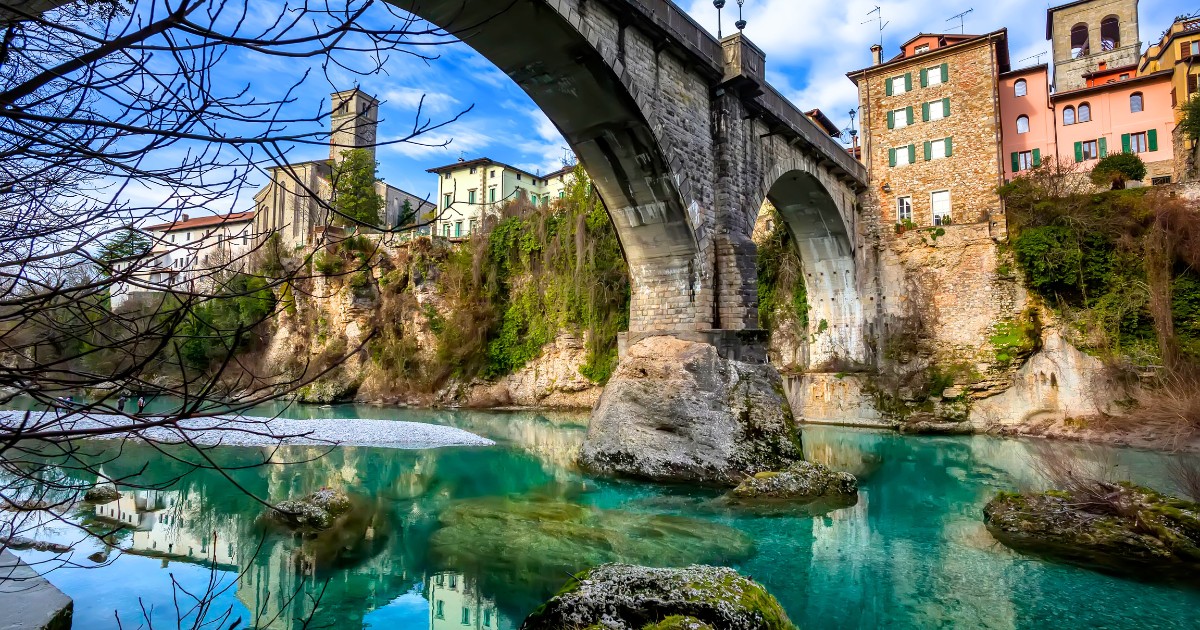


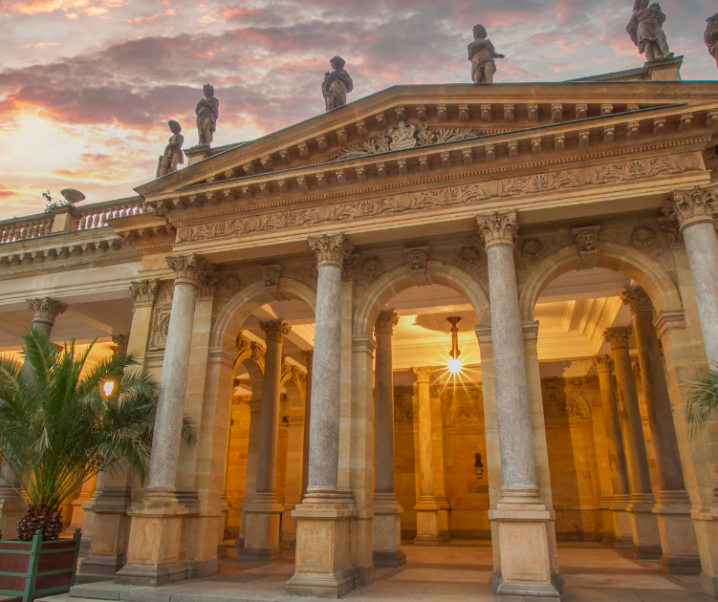

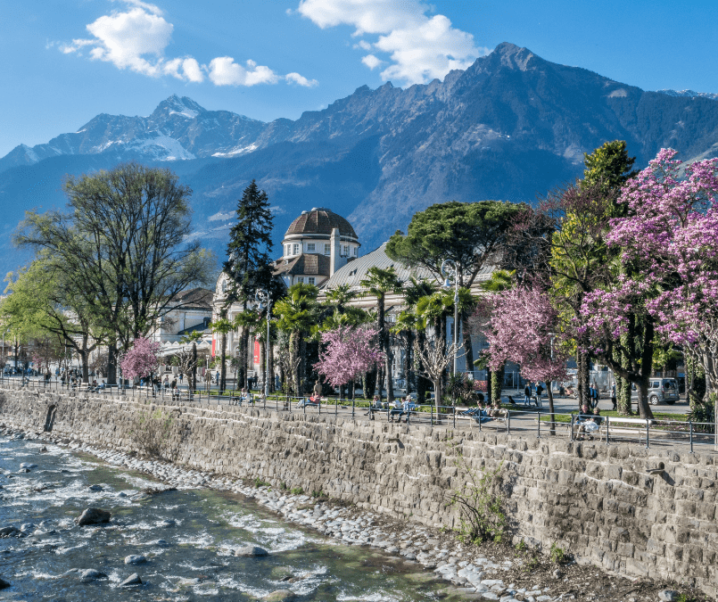

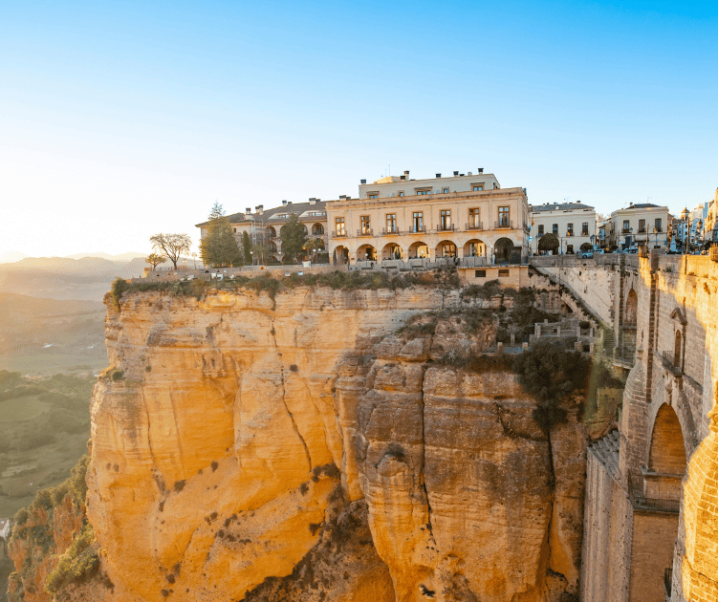
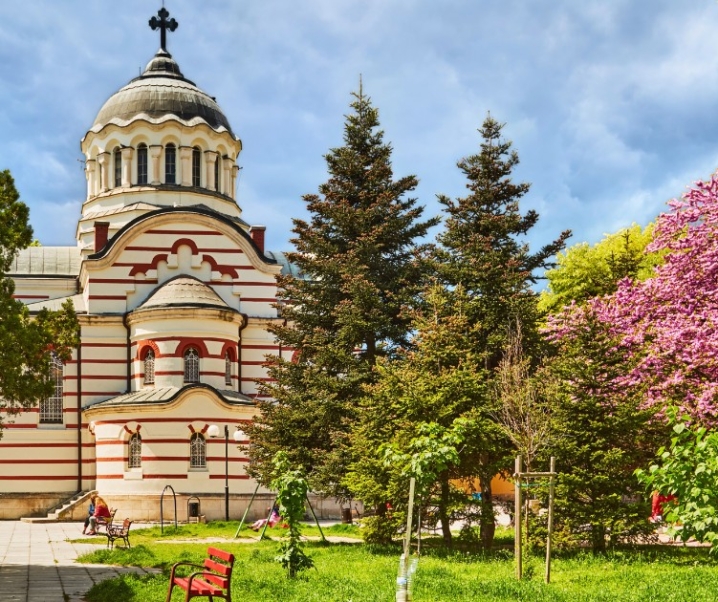

What do you think?